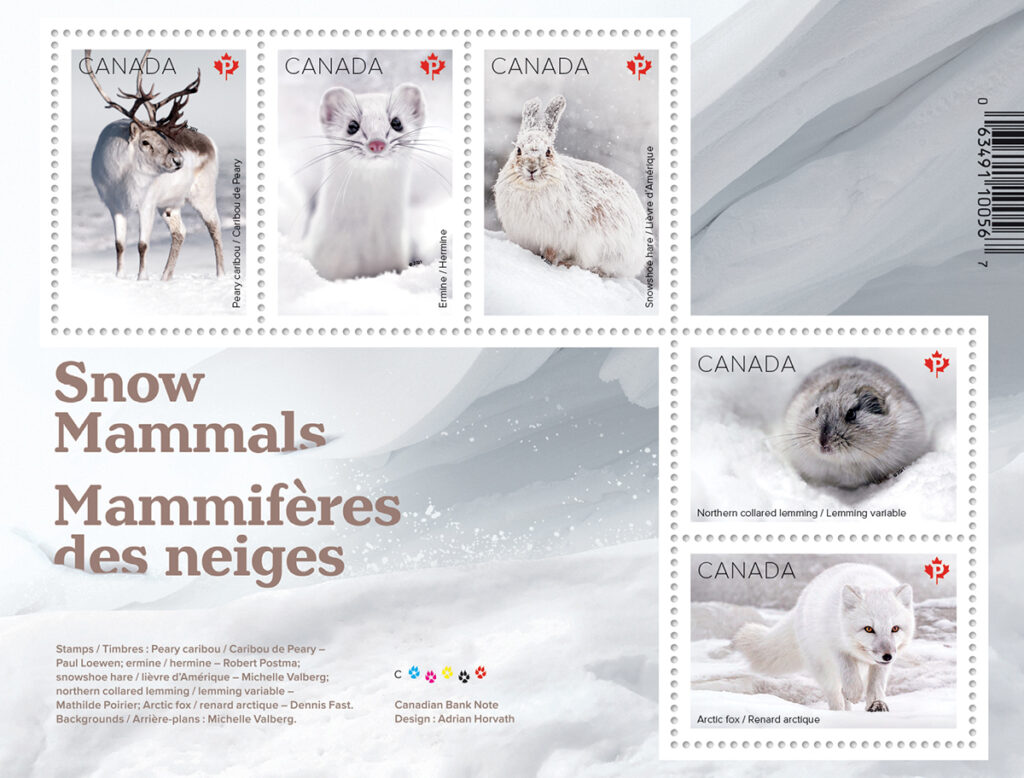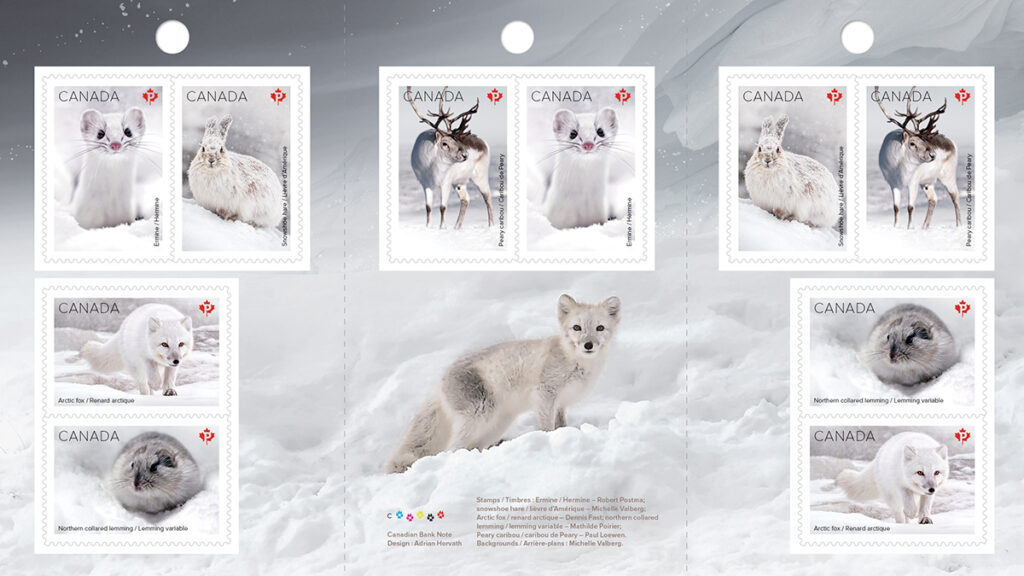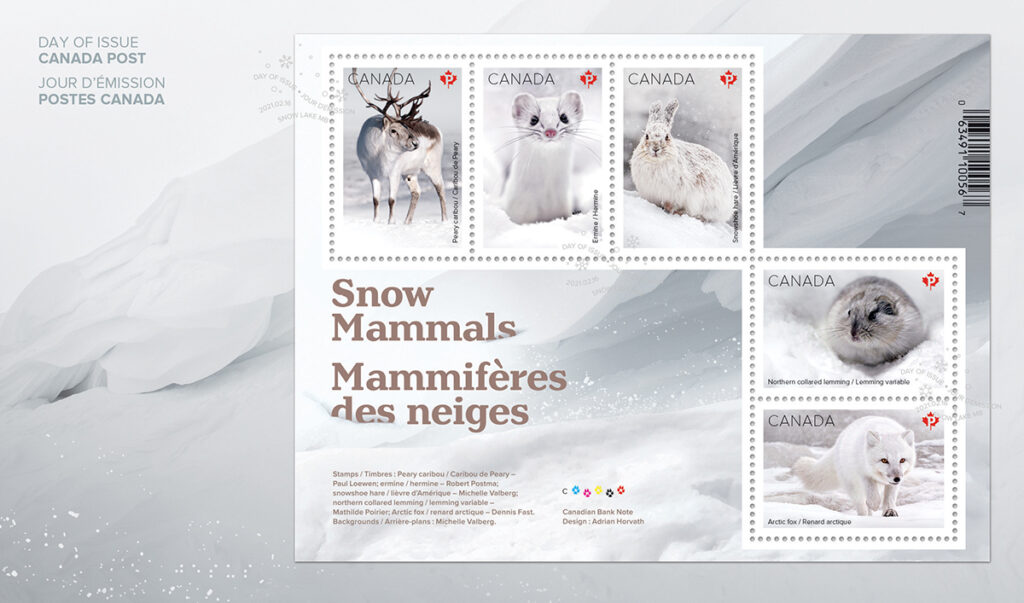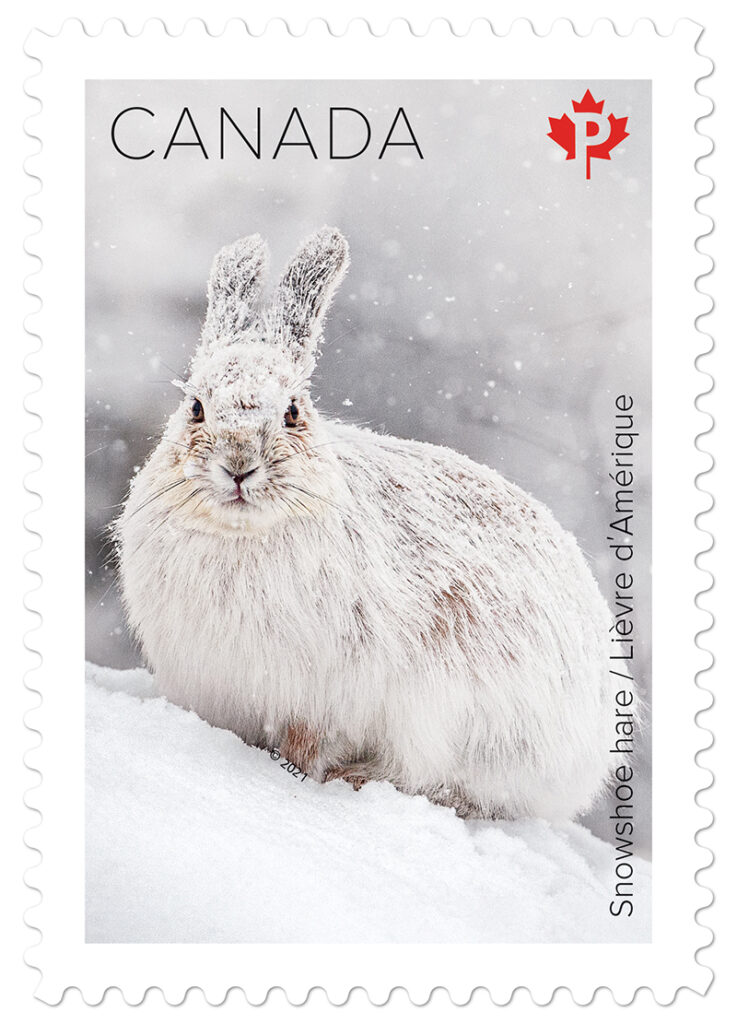SNOW LAKE, MANITOBA – The beauty and diversity of Canada’s wildlife take centre stage in a new set of stamps issued in February by Canada Post. The Snow Mammals series features five animals found in Canada that are uniquely adapted to surviving in our snowy climate because their otherwise dark coats turn white in winter.
These stamps feature the ermine, snowshoe hare, Arctic fox, northern collared lemming, and Peary Caribou – two predators and three prey – whose camouflage makes them difficult to spot in their natural habitats, especially at this time of year.
These five are among only 19 species of mammals worldwide – and 12 in Canada – that undergo a change in coat colour as the result of a complex physiological process influenced by changes in daylight hours. Moulting is a gradual, twice-yearly process that starts around the time of the first snowfall and reverses in the warmer months, beginning around the time of the spring melt.
About the Stamps
Designed by Adrian Horvath, these stamps showcase an animal in its winter coat and habitat. Each photograph is the work of a Canadian photographer. Robert Postma captured the Ermine; Michelle Valberg the snowshoe hare; Dennis Fast the Arctic fox; Mathilde Poirier the northern collared lemming; and Paul Loewen the Peary caribou.
In the lower left-hand corner of each stamp, visible only under ultraviolet (black) light, is a set of the animal’s tracks as they would appear in fresh snow.
Printed by Canadian Bank Note, these Permanent™ domestic rate stamps are available in a booklet of 10, affixed to an Official First Day Cover, and as a souvenir sheet.
Stamps and collectibles are available at canadapost.ca/shop.
PHOTONews asked Michelle Valberg to describe how she came face to face with the “angry bunny”.
“I went out on a with some friends on a snowy March day in 2014 to photograph birds in west Ottawa. I travel the world as a wildlife photographer, but any time I can, I photograph in my own “backyard” – which can also mean a park, forest, lake, or river area close to home. I was photographing a blue jay on a tree when one of my friends spotted the hare close by. It was completely unexpected. We all crouched low to the ground. I used my 200-400mm lens to get some images of the hare hopping about. As quickly as he showed up, he was gone.”
The snow falling was beautiful and made the scene a perfect one, but the expression on the hare’s face was what made this shot even better. I called him the “angry bunny”, even though he was quite happy in his environment, and he didn’t care about us at all.
A reminder… you don’t have to go anywhere exotic to photograph wildlife, just look for nature close to home, I can almost guarantee you will find something!”
About the Author
Michelle Valberg is an award-winning Canadian Nikon Ambassador and Canadian Geographic Photographer-in-Residence. She has been a visual story teller for over 30 years capturing wild creatures, stunning landscapes and compelling portraits around the world. She has also published 5 books and is a member of the Explorer’s Club.
Visit michellevalberg.com or follow on Instagram – @michellevalbergphotography











